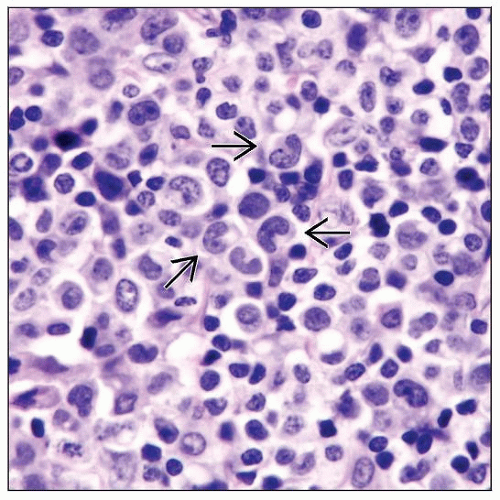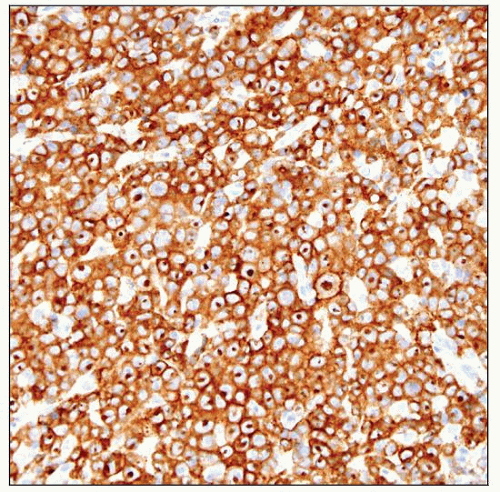ALK− Anaplastic Large Cell Lymphoma
Francisco Vega, MD, PhD
Key Facts
Terminology
Lymphoma histologically resembling spectrum of ALK(+) ALCL, with strong and uniform expression of CD30, but lacking ALK expression
Clinical Issues
Poorer prognosis than ALK(+) ALCL
Better prognosis than PTCL-U
Microscopic Pathology
Most common variant closely mimics classical variant of ALK(+) ALCL
Hallmark cells less frequently seen in ALK(−) ALCL than ALK(+) ALCL
ALK(−) ALCL often more anaplastic than ALK(+) ALCL
Cohesive growth pattern
Sinus involvement
Ancillary Tests
Immunophenotypic studies needed to confirm dx
CD30 strongly and uniformly positive
ALK negative
Frequent expression of cytotoxic molecules
Absence of B-cell markers
EBV positive in subset of cases
Monoclonal T-cell receptor gene rearrangements
Top Differential Diagnoses
ALK(+) ALCL
PTCL-U
Cutaneous ALCL
Staging studies needed to establish diagnosis of cutaneous ALCL
TERMINOLOGY
Abbreviations
Anaplastic lymphoma kinase (ALK) negative, anaplastic large cell lymphoma (ALCL)
Definitions
Lymphoma histologically resembling ALK(+) ALCL, with strong and uniform expression of CD30, but lacking ALK expression
CLINICAL ISSUES
Presentation
No age preference
No sex predilection or slight male predominance
Extranodal involvement can be seen (skin, liver, and lungs)
B-symptoms frequent
Treatment
Doxorubicin-based chemotherapy regimens
Prognosis
International prognosis index (IPI) often high
Poorer prognosis than ALK(+) ALCL but better than peripheral T-cell lymphoma unspecified (PTCL-U)
MICROSCOPIC PATHOLOGY
Histologic Features
Most common variant closely mimics classical ALK(+) ALCL
Large neoplastic cells including “hallmark” cells
Cohesive growth pattern
Extensive sinus involvement
Hallmark cells less common than in classical variant of ALK(+) ALCL
Anaplasia usually greater in ALK(−) ALCL than in ALK(+) ALCL
ANCILLARY TESTS
Immunohistochemistry
Stay updated, free articles. Join our Telegram channel

Full access? Get Clinical Tree





